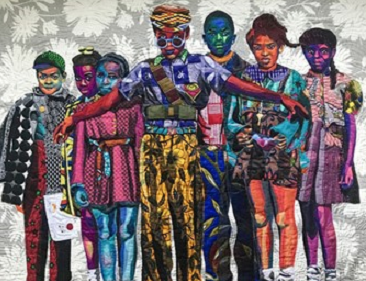
Sexuality explained: Understanding gender
Written by Mr Neo Sokwaliwa
November, 28, 2020
Understanding gender and the psychology relating to it is tough. In our dynamic world we are often compelled to be attuned to what is happening in it. Thus this means we need to be willing enough to understand the dynamic people who live in it. In this article we briefly explore what sexual orientation and gender identity (SOGI) are and how one should embrace another individual who may identify differently from them.
Let’s dive right in… Pronouns play an integral role in communication. They allow us to establish rapport with whomever we encounter. Individuals may be referred to as he/ him/ his or she/ her/ hers. More often people are more welcoming when you refer to them as they/ them/ theirs. The latter category is more inclusive and is often more comfortable to use in both professional and social settings.
A good place to start is knowing that gender and sexuality are divorced from each other – they are different from one another. Gender is an all-encompassing term which includes sexual orientation, sexual expression and sex. For this reason gender may be broadly subdivided into four categories, namely:
- gender identity,
- gender expression,
- biological sex and
- sexual attraction.
Sex refers to the biological sex assigned to an individual at birth. This is primarily determined by the coupling of the sex chromosome (the X and Y chromosomes). An individual with XX chromosomes is biologically a female, and an individual with XY chromosomes is biologically a male.
There are individuals who are classified as intersex (formerly known as ‘hermaphrodite’). This is because their chromosomal profile doesnt register the standard XY or XX sex chomosomes, as a result of they are born with ambiguous genitalia (informally, unclear genitalia). There are 3 major factors contribute to one being biologically intersex.
Gender identity may be defined as one’s own sense of one’s identity. In other words, this is how they see themselves. One may think of it as one’s man-ness or woman-ness; how one feels in relation to being a man or a woman. It is important to note that while most people in our society identify as either man or woman, other people choose not to. This, thus introduces the people who are gender non-binary, which simply means that their gender identities do not fall within the man-woman dichotomy. We refer to individuals who choose not to identify with an already existing gender as being agender – not belonging to a specific gender. Lastly, some may identify as transgender: where their gender identity is discordant from their sex assigned at birth.
Gender expression pertains to how one expresses oneself to the world – how they present themselves physically. This pertains to one’s femininity or masculinity. An illustration below indicates the possible labels that are associated with gender expression (although not limited to what is provided).
Sexual attraction may be defined as the attraction that one feels or experiences towards another person. This attraction is the sexual or romantic attraction that one experiences. People can be:
- Heterosexual – where one is attracted to a gender that is different from theirs,
- Homosexual – where one is attracted to the gender that is the same as theirs (note that the preferred term here is gay, not homosexual),
- Bisexual – where one is attracted to both genders or;
- Pansexual – where an individual is attracted to any and more than one gender.
- It is important that there are individuals who may not experience any sexual attraction towards anyone. These individuals are referred to as being asexual.
Below is an illustration of the Gender-bread person. This illustration is immensely helpful when wrapping your head around the complexities of gender and sexual orientation.

To conclude, gender is dynamic. People are ever-changing. Life is wonderful when we embrace truth and when we embrace the people who live out their truth.
For more information checkout these References and links:
- Sex assigned at birth and Gender identity: what is the difference?
- Sexual orientation and Gender identity
Ubusha Bami futsi yimi lo – My youth and this is me! © 11 July 2020